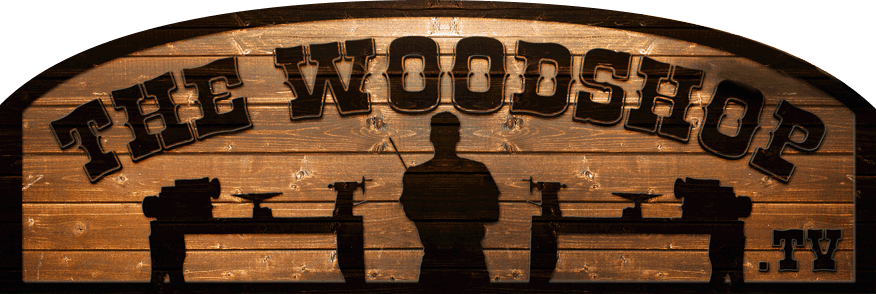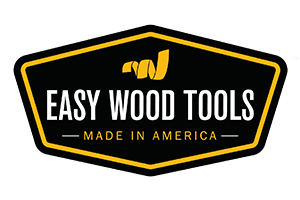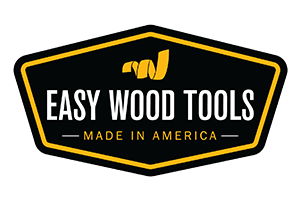Fred Flintstones Car
The Flintmobile is Fred Flintstone’s car on the classic TV show. I made this model of the car that is 9” long by 7 1/2” tall using maple, walnut, and bocote hardwood, plus some leather accents.
The wheels are turned from a maple spindle. Not so much “wheels” as they are large cylinders, you’ll only need two of these. I started with a 2” square piece at 9” long, turned it round, added finish, and drilled it out while it was still on the lathe. Then I cut it in half.
The axles are made from a contrasting wood (Bocote in this case). These do not go all the way through the wheels, but instead cap each end and join them to the frame. It helps to turn a small knob on each end to act as a sort of hubcap. Make four of these.Check the size of the through hole on the wheels, then make the axle slightly smaller. It’s a good idea to start too large and keep reducing the size until they fits tight.
For the canopy, I turned 4 Bocote spindles the top ones I made a small bead at one end. The bead will be used to connect them to the two uprights. You’ll need to drill a 1/8″ hole in each bead, and a small 1/16″ hole in each end of all 4 spindles for threading on the canopy. These are simple sticks that fit to holes drilled in the frame and hold up the canopy leather.
The sides are supposed to look like logs. I drew a rough log shape onto the wood, then cut it on the bandsaw and refined the edge with a spindle sander. Make sure the notches in each end are large enough to accept the hub caps. The exact dimensions aren’t important as long as everything fits together well. Mine are 8 1/4″
I used a piece of burl for the seats and dashboard to approximate the look of the stone slabs from the cartoon. The seat backs are simply flat pieces cut to size on the bandsaw. The burl at the top gives it some character. I cut a small tenon on to the bottom so I could join them to the seats.For the seats themselves, I cut another flat piece, then added a small mortise by drilling out the desired area. This makes it very easy to join the seats and seat backs.
Fred needs a way to steer, so I used a scrap of Bocote to create a bone-shaped steering wheel and glued it to the dashboard.
That’s it for the wooden pieces. Join everything together with wood glue, being careful not to use too much. Apply clamps to hold the pieces together as they dry.
The last detail is the leather for the canopy. Simply cut a piece of craft leather to fit, then use a sewing needle to roughly stitch it to the frame. Remember, you’re approximating the work of a cartoon caveman — not everything has to be perfect.Cut a hole for the rear window and this part is finished.
I used Howard beeswax for the finish.
That’s it!
I had fun making this project, even if it is a little silly. Silly isn’t a bad thing. Woodworking should be fun.If you have any questions, feel free to ask in the comments section. Thanks!
Woodturning Back to Basics #6
Since I get a lot of questions about turning green wood, today’s Back to Basics is about turning a green Madrone bowl.
First of all: if you buy green wood and can’t get to it right away, you can store it in a mixture of dishwashing soap and water to keep it wet while also preventing rot. When you’re done, remember to put the bowl in a bag with the shavings or seal up the wood in some other way to control the drying time of the wood. If it dries too quickly, it may crack — and then all of your work is out the window
I’m also trying out a new bowl gouge in this video from Doug Thompson at Thompson Tools. The grind is a little different from what I’m used to, so there’s some trial and error involved. As with any woodworking tool, start slow, be cautious, and build your skills until you gain some confidence and experience. It will come more quickly than you think.
One of the most fun parts of turning green wood is the big, curly shavings produced. Since the wood is still wet, you get long looping curls of wet wood and relatively little dust. It’s a fun experience.
Look at those curls go!
Once I’ve shaped the outside of the bowl, I turn a tenon on the end. Make the tenon larger than you would on a dried piece of wood, as the chuck will compress it more than you expect. I start out with tailstock support just to be safe, but once I’m sure the outside is trued up, I can pull it away. You should also keep an eye on your chuck and re-tighten it from time to time.
If you do a lot of bowl turning, look into getting a corer. This tool will remove most of the interior wood and keep you from creating so much wasted wood.
If you want a thick bowl, drying is critical. However, if you want a thinner bowl, you can thin out the sides to just over 1/8” and it should dry that way without issue. Mine warped a little bit, but it didn’t crack!
The Christmas ornament challenge 2016
DIY Lego Frankenstein
Did you know that LEGOs were once made out of wood? The inventor of LEGO, Ole Kirk Christiansen, was a carpenter from Denmark. The original toys were wooden, but switched to plastic in 1947. With this project, I make a LEGO-style Frankenstein figure out of wood.



































